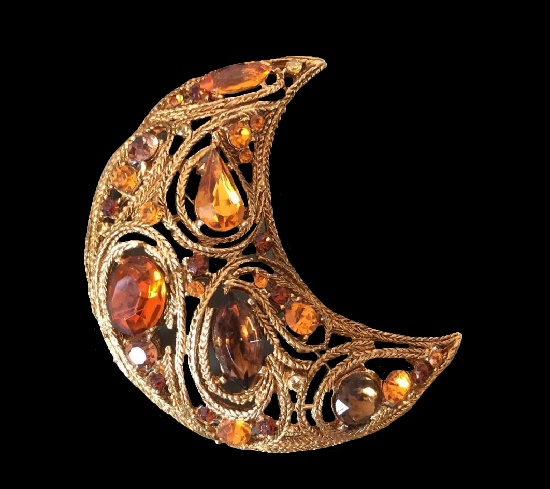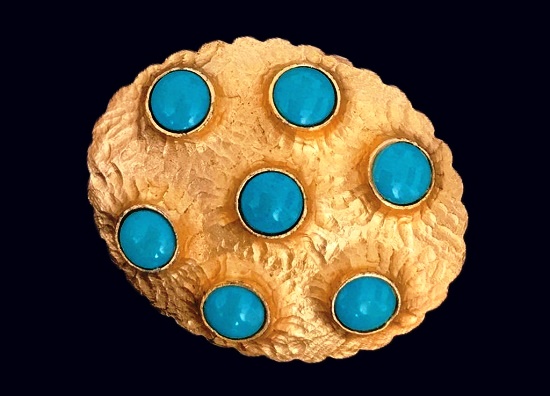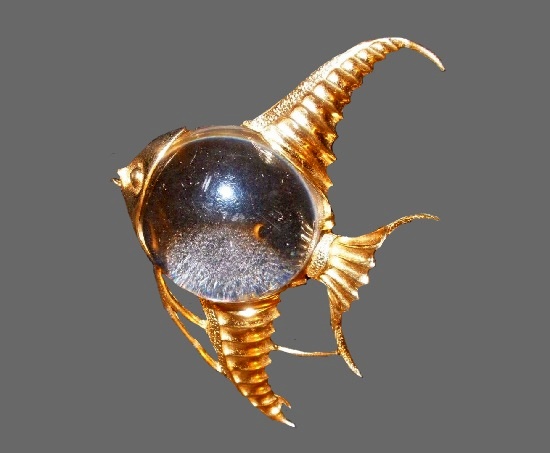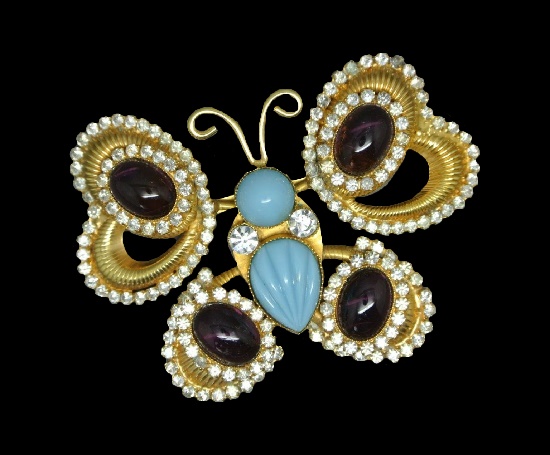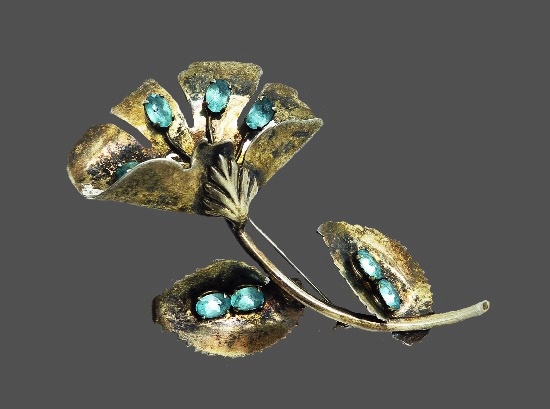Giorgio Beverly Hills vintage costume jewelry

Bow and pearl bell dangle brooch. Gold tone, clear rhinestones, faux pearl. Giorgio Beverly Hills vintage costume jewelry
Giorgio Beverly Hills vintage costume jewelry
The history of the American brand Giorgio Beverly Hills began in 1961, when George Grant and Fred Hayman founded the women’s fashion boutique at 273 Rodeo Drive. Thus, the name Giorgio comes from the name of George Grant, and Beverly Hills from the location of the boutique. However, already in 1962, Hayman bought the business from Grant. Among the buyers of the boutique were such famous personalities as Natalie Wood, Princess Grace, Ronald Reagan, Nancy Reagan, Diana Ross, Elizabeth Taylor, and others. Along with perfumes and clothes, the boutique also sold costume jewelry bearing the name of this boutique. In addition, along with jewelry, the boutique offered precious jewelry made of gold, with natural stones and diamonds.
Traditionally, different companies and designers have supplied and created jewelry for the boutique. These include Pejois Inc., Ronte, Victoria Wieck, Pauling, David Kuo, Zina, Charmant and many others. Accordingly, Beverly Hills jewelry does not have a particular style. However, the silver jewelry created by modernist designer Zina between 1970-1990 stands out.
Read more »
